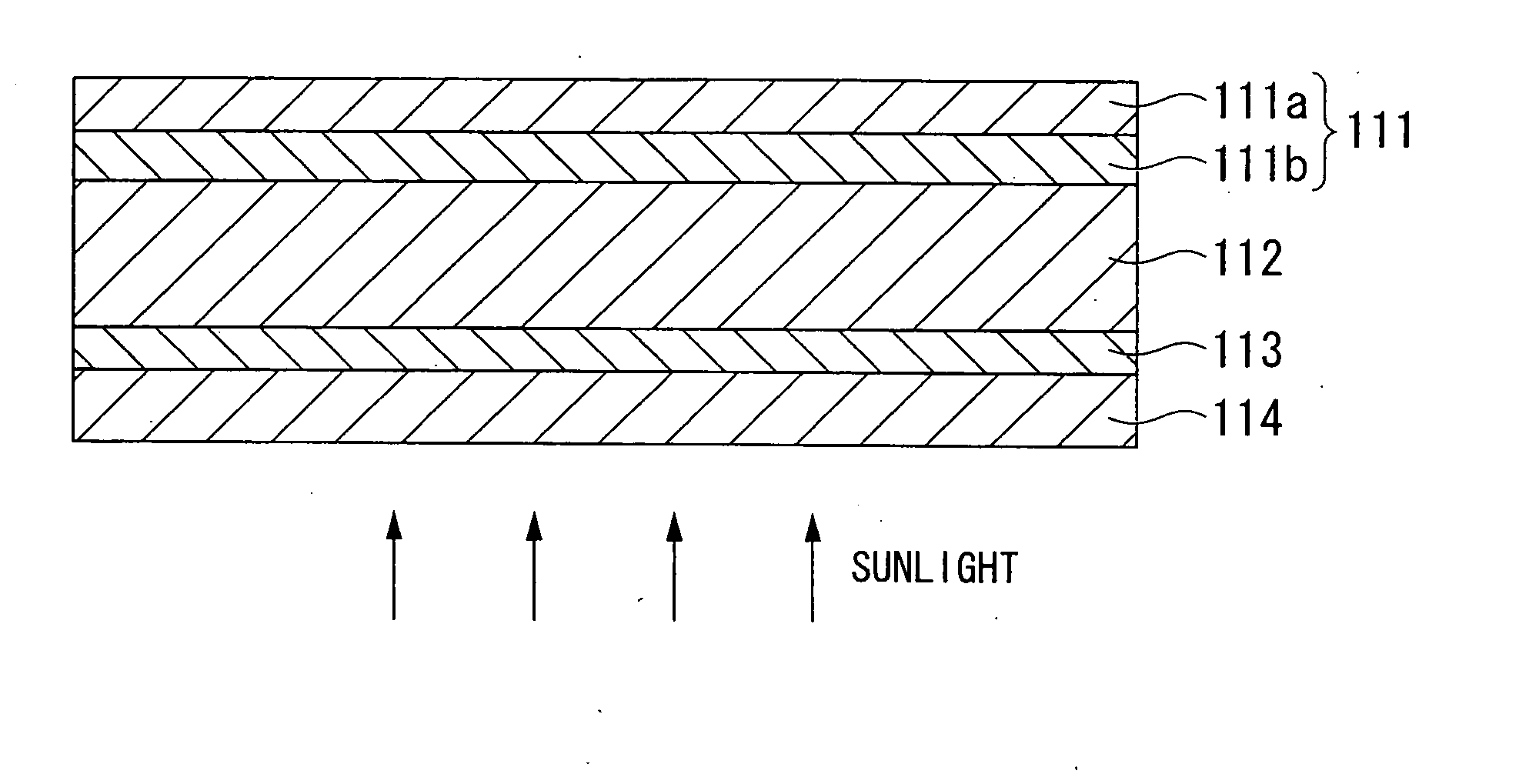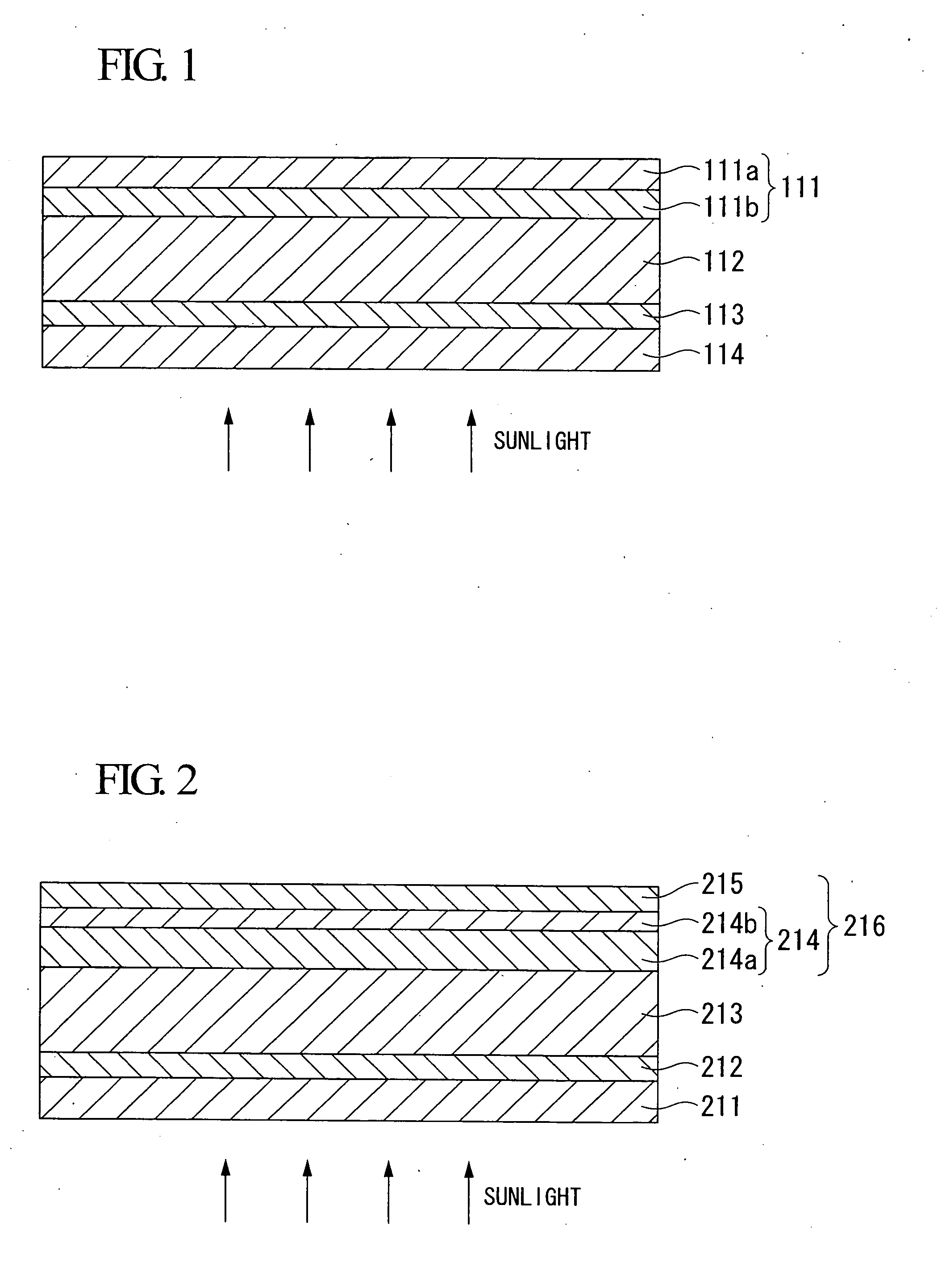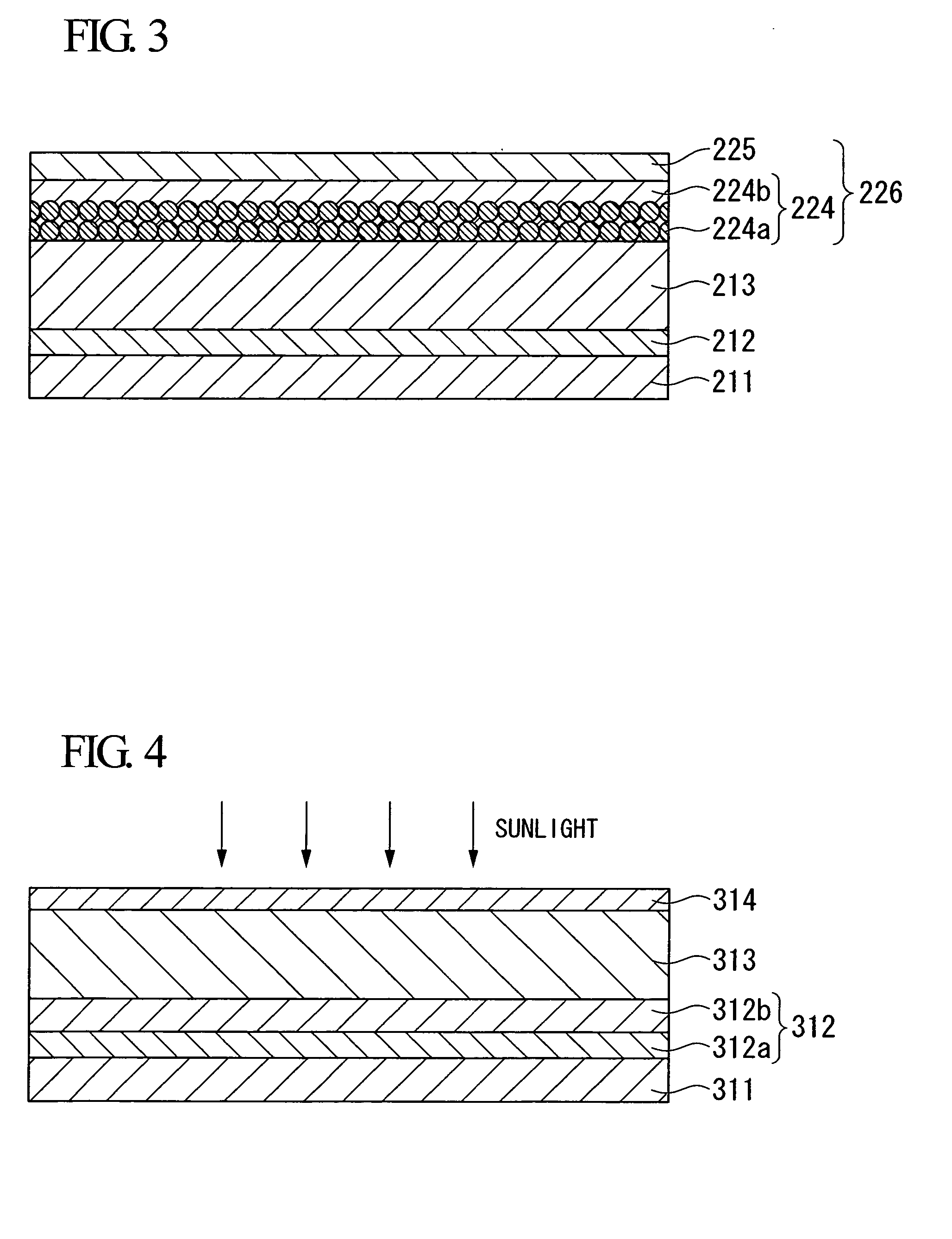Comppsite film for superstrate solar cell, method for producing the composite film for superstrate solar cell, composite film for substrate solar cell, and method for porducing the composite film for substrate solar cell
a solar cell and composite film technology, applied in the field of composite films, can solve the problems of large amount of time and energy, difficult to improve the mass productivity, and complex subsequent production process steps, etc., and achieve satisfactory reflectance, increase reflection effect, and production comparatively cheap
- Summary
- Abstract
- Description
- Claims
- Application Information
AI Technical Summary
Benefits of technology
Problems solved by technology
Method used
Image
Examples
first embodiment
[0170]As illustrated in FIG. 1, a superstrate thin-film solar cell typically has a structure in which a first transparent conductive film (the light incident side transparent conductive film) 113 and a photovoltaic layer 112 are laminated sequentially on top of a substrate 114, a second transparent conductive film 111b is formed on top of the photovoltaic layer 112, and a conductive reflective film 111a is then formed on top of the second transparent conductive film 111b.
[0171]The first embodiment of the present invention relates to a composite film 111 for a superstrate thin-film solar cell that is composed of two layers, namely, the second transparent conductive film 111b formed on top of the photovoltaic layer 112, and the conductive reflective film 111a formed on top of the second transparent conductive film 111b.
[0172]In the composite film 111 according to the first embodiment of the present invention, the second transparent conductive film 111b is formed by using a wet coati...
second embodiment
[0216]A superstrate thin-film solar cell generally has a structure in which a first transparent conductive film (the light incident side transparent conductive film) and a photovoltaic layer are laminated sequentially on top of a substrate, a second transparent conductive film is formed on top of the photovoltaic layer, and a conductive reflective film is then formed on top of the second transparent conductive film.
[0217]The second embodiment of the present invention relates to a composite film for a superstrate solar cell having a second transparent conductive film formed on a photovoltaic layer of the superstrate solar cell, and a conductive reflective film formed on top of the second transparent conductive film.
[0218]FIG. 2 is a diagram that schematically illustrates a cross-section of the composite film according to the second embodiment of the present invention. As illustrated in FIG. 2, the special features of the structure of the composite film 216 of the second embodiment of...
third embodiment
[0267]As illustrated in FIG. 4, a substrate thin-film solar cell typically has a structure in which a composite film 312 is formed on top of a substrate 311, and a photovoltaic layer 313 and a first transparent conductive film (the light incident side transparent conductive film) 314 are laminated sequentially on top of the composite film 312. The composite film 312 includes a conductive reflective film 312a formed on the substrate 311 and a second transparent conductive film 312b formed on the conductive reflective film 312a.
[0268]The third embodiment of the present invention relates to a composite film 312 for a substrate solar cell that is composed of two layers, namely, the conductive reflective film 312a formed on the substrate 311 and the second transparent conductive film 312b formed on the conductive reflective film 312a.
[0269]In the composite film 312 of the third embodiment of the present invention, the conductive reflective film 312a is formed by using a wet coating met...
PUM
 Login to View More
Login to View More Abstract
Description
Claims
Application Information
 Login to View More
Login to View More - R&D
- Intellectual Property
- Life Sciences
- Materials
- Tech Scout
- Unparalleled Data Quality
- Higher Quality Content
- 60% Fewer Hallucinations
Browse by: Latest US Patents, China's latest patents, Technical Efficacy Thesaurus, Application Domain, Technology Topic, Popular Technical Reports.
© 2025 PatSnap. All rights reserved.Legal|Privacy policy|Modern Slavery Act Transparency Statement|Sitemap|About US| Contact US: help@patsnap.com



